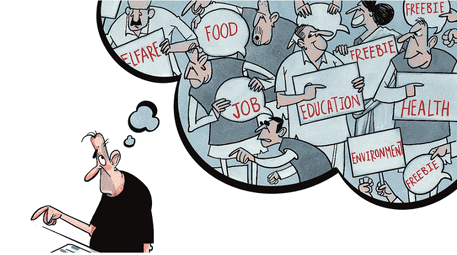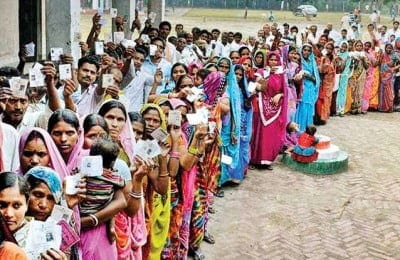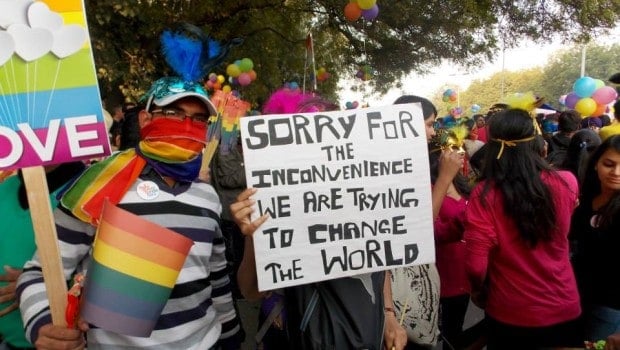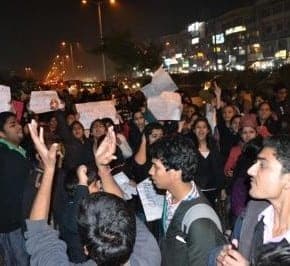A distortion of democracy? A betrayal of a social contract? A passive receipt of benefits or an active political participation towards a welfare state?
The language of democratic exercise often employs, not merely as its endorsers but also its practitioners, various sweet shop owners who incentivize capital-based campaigning. The Delhi state elections are a display of such a state of war, which has as its highlights, the various monetary biddings made over very selective and political demographics.
It is not unknown that the Aam Aadmi Party (AAP), in its manifesto, has promised a sum of INR 2100 to women under the aegis of the ‘Mukhyamantri Mahila Samman Yojna’. The certainty of this scheme is contingent on the party securing a majority. However, a serious delirium of such schemes is the incompetent and biased nature of such claims. While it is true that a welfare state works for its marginalized citizens, the composition of Delhi and its voters demands serious scrutiny. The marginalized of the capital are an extremely heterogeneous group, and certainly, when a distinction is made in the category of women by the state, the exclusion of migrant and transgender women disallows any serious engagement towards actual welfare.
Nitara, a transgender woman and a student of Delhi University told DU Beat:
There are about four to five thousand registered trans voters in Delhi, the official number of which I believe to be much higher. Women are promised INR 2100 in monetary assistance by AAP, following which the Congress and BJP have promised INR 2500. While it’s good they do it, why don’t trans women get similar aid? Don’t we deserve it? In fact, a trans woman is more vulnerable than a cis woman is. This is the bare minimum we can be provided with. We are not promised incentives because our numbers are low. Nobody wins elections with 2-3 thousand votes. Delhi Vidhan Sabha elections tell you that you’ll only be cared for if you are a big vote bank, else nobody is with you.”
Nitara’s statement underscores the transactional nature of electoral promises where welfare is not a matter of rights but of electoral arithmetic. The exclusion of transgender women from such schemes reveals the shallow inclusivity of political manifestos, which are tailored to appease large vote banks rather than address the systemic vulnerabilities of marginalized communities. This is not merely an oversight but a deliberate strategy to prioritize electoral gains over equitable welfare. The Delhi elections, in this regard, are a microcosm of a larger national trend where democracy is reduced to a marketplace of freebies, and voters are treated as consumers rather than citizens.
With the imposition of the Model Code of Conduct, a partial hiatus has been put to the mockery of democracy and development. However, desperate attempts to milk out this inconsistent idea have not stopped. AAP, for instance, has included a ‘Pujari-Granthi Samman Yojana’ for temple and gurudwara priests. Arvind Kejriwal, the National Convener of AAP explained the scheme in a Economic Times report,
Pujaris and granthis are an important part of our society, but they are often a neglected section. For the first time in the country, we are introducing a scheme to support them, under which they will receive a monthly allowance of INR 18,000.”
This circles back to questioning the intentionality of such a culture of voting. Lest it be taken as a pitting of one religion against the other, it is a certain fact that other religious minorities such as the Muslims and Christians undergo neglect and invisibility at much deeper scales but any affirming reality escapes them during election season. The culture of freebies, while seemingly beneficial on the surface, is a hollowing democratic practice that undermines the very essence of governance. Political parties, in their bid to outdo each other, have turned welfare into a competitive sport where the highest bidder wins. For instance, in the 2021 Tamil Nadu elections, the DMK and AIADMK engaged in a bidding war, promising everything from free laptops to cash transfers, with little regard for the fiscal sustainability of such schemes. Moreover, the freebie culture perpetuates a dependency syndrome among voters, where electoral choices are driven by immediate monetary gains rather than informed deliberation on policies and governance. This undermines the democratic ideal of an engaged and informed citizenry, reducing elections to a transactional exchange of votes for cash or goods.
The critique of freebie culture is not a dismissal of welfare schemes but a call for their rationalization and equitable implementation. Welfare measures must be designed to address structural inequalities and empower marginalized communities, rather than serve as tools for electoral manipulation. For instance, schemes like the Mahatma Gandhi National Rural Employment Guarantee Act (MGNREGA) have been lauded for their focus on creating sustainable livelihoods rather than doling out cash handouts. While the hollowing of democratic ideals is saddening, it is not very different from what we as participants are used to believing as development at all times. This makes one question if a democratic ideal is but a sweet shop economy?
Read Also: Yeh Kya Hua, Kaise Hua: Dissecting the Congress’ Lapsus Regnī
Featured Image Credit: Sourav Rai for Indian Express
Bhavana Bhaskar





